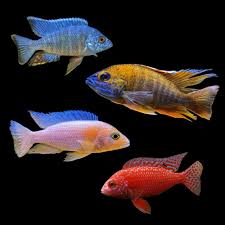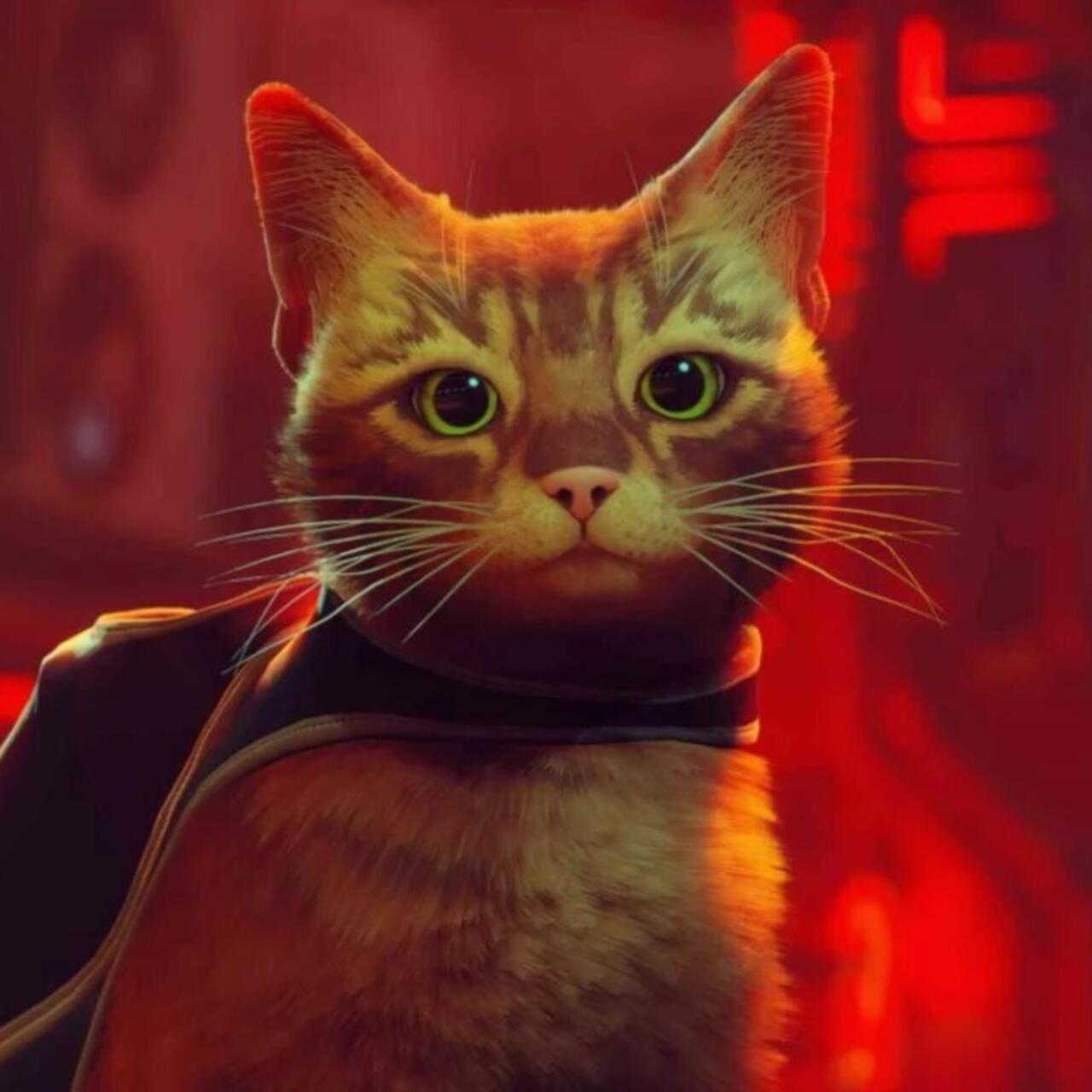
Peacock Cichlids
Conditions of detention
Peacock cichlids require a well-maintained aquarium with a minimum size of 55 gallons, although larger tanks are preferable, especially if housing multiple males or a mixed cichlid community. They thrive in hard, alkaline water with a pH between 7.8 and 8.6 and water temperatures between 75-82°F (24-28°C). Peacock cichlids prefer a tank setup that includes sandy substrates and rock formations that provide plenty of hiding spots and territories. They are not as aggressive as other cichlids but still require a well-structured environment to minimize territorial disputes.
Useful Fact: Peacock cichlids are more peaceful than many other African cichlids, making them a good choice for mixed cichlid tanks, but they still require careful management of tank mates and territories.
Nutrition and diet
Peacock cichlids are primarily carnivorous, feeding on small invertebrates and crustaceans in the wild. In captivity, they thrive on a high-protein diet, including high-quality cichlid pellets, as well as live or frozen foods such as brine shrimp, bloodworms, and krill. It’s important to avoid feeding them too much vegetable matter, as their digestive systems are better suited to protein-rich diets.
Useful Fact: Feeding Peacock cichlids a varied diet that includes live or frozen foods helps maintain their vibrant coloration and overall health.
Health
Peacock cichlids are generally hardy but can be susceptible to common cichlid diseases such as ich, fin rot, and Malawi bloat, particularly if water quality is poor or if they are fed an improper diet. Regular monitoring of water parameters and maintaining good water quality are crucial to preventing these issues.
Useful Fact: Regular water changes and a stable environment are key to preventing health issues in Peacock cichlids, particularly in tanks with multiple cichlids where stress can be a factor.
Grooming and care
Peacock cichlids do not require traditional grooming, but their environment needs regular maintenance. Given their preference for high water quality, weekly water changes of 20-30% are recommended. It’s also important to keep their tank free of uneaten food and debris, which can quickly deteriorate water quality.
Useful Fact: Peacock cichlids appreciate a well-structured environment with plenty of caves and crevices, which can help reduce stress and territorial disputes.
Education and training
Peacock cichlids are intelligent and can learn to recognize their owners. They may come to the front of the tank during feeding times and can be conditioned to respond to specific cues, such as the sound of food being added to the tank.
Useful Fact: Peacock cichlids enjoy exploring their environment, so providing a dynamic tank setup with plenty of hiding spots and open areas for swimming can keep them engaged and active.
Toys and entertainment
Peacock cichlids enjoy exploring their environment, and providing them with a well-decorated tank that includes rocks, caves, and other hiding spots can help them feel secure. They also appreciate a tank setup that includes sandy substrates, which they may sift through in search of food.
Useful Fact: Peacock cichlids are not heavy diggers, but they do enjoy rearranging their environment, so consider using sturdy, unbreakable decorations that they can move without damaging them or the tank.
Safety
Peacock cichlids are generally peaceful but can be territorial, especially males. It’s important to provide enough space to prevent territorial disputes and to choose tankmates carefully. They do well in mixed cichlid tanks with other similarly sized, peaceful species from Lake Malawi, but avoid housing them with overly aggressive cichlids.
Useful Fact: To minimize aggression, it’s often best to keep a ratio of one male Peacock cichlid to several females, which can help reduce competition and stress.
Accessories
Essential accessories for a Peacock cichlid tank include a powerful filter, as they thrive in clean water, and a heater to maintain a stable temperature. Peacock cichlids also appreciate a tank with plenty of hiding spots created by rocks, caves, and other decorations. A sandy substrate is ideal for their natural behavior of sifting through the sand.
Useful Fact: Peacock cichlids are best kept in a tank with both open swimming areas and plenty of rock structures that mimic their natural habitat in Lake Malawi.
Socialization
Peacock cichlids are social fish but can be territorial, especially males during breeding. They do well in species-specific tanks or with other peaceful, similarly-sized cichlids from Lake Malawi. When keeping multiple Peacock cichlids together, it’s important to monitor their interactions closely and be prepared to separate individuals if aggression becomes an issue.
Useful Fact: Keeping Peacock cichlids with other peaceful species from Lake Malawi can create a colorful and dynamic community tank, but ensure all species have similar water and dietary requirements.
Travel and Transportation
When transporting Peacock cichlids, use a large, well-oxygenated container filled with water from their tank. Due to their size and territorial nature, it’s important to minimize stress during transport by keeping the container in a dark, stable environment. Avoid rapid temperature changes and acclimate them slowly to their new environment upon arrival.
Useful Fact: Peacock cichlids can be sensitive to changes in water parameters during transport, so it’s important to acclimate them gradually to their new tank to avoid shock.
Behavior and psychology
Peacock cichlids are known for their peaceful nature compared to other cichlids, but they can still be territorial, especially males. They are social fish that enjoy the company of their own species and can display fascinating courtship and breeding behaviors. Peacock cichlids are mouthbrooders, meaning females carry their eggs and fry in their mouths for protection. Their vivid colors and calm demeanor make them a popular choice for mixed cichlid tanks.
Useful Fact: Male Peacock cichlids often display their brightest colors when trying to attract a mate, making them particularly stunning during the breeding season.
Legal aspects
There are generally no legal restrictions on owning Peacock cichlids, but it’s important to ensure they are sourced from reputable breeders or suppliers. Some species of cichlids, particularly those from the wild, are protected due to over-collection or habitat loss, so it’s important to be mindful of conservation status when selecting fish.
Useful Fact: When purchasing Peacock cichlids, consider opting for captive-bred individuals to support sustainable practices and ensure healthier, better-adapted fish for the aquarium.


